Varicose veins are a disease characterized by changes in the condition of the veins in the legs with impaired blood circulation. When the form is neglected, the vessels swell, which leads to swelling and pain in the limbs (under load), as well as cosmetic discomfort. Surgical removal of damaged veins is effective for this step.
Indications for varicose vein surgery
Surgery for varicose veins can only be performed if there are indications for the removal of blood vessels:
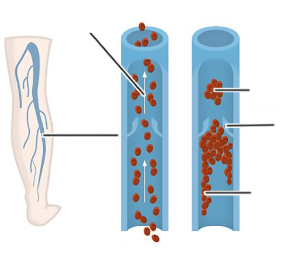
- varicose changes affected most of the vein;
- severe pain and swelling in the legs during physical exertion, which interferes with a normal lifestyle;
- the formation of open wounds and ulcers against the background of the development of the disease. It is dangerous to attach a secondary infection;
- violation of the permeability of blood through the vessels, often accompanied by convulsions;
- marked development of vascular necrosis;
- pathological change in the veins, accompanied by their expansion and protrusion. The change is dangerous by trauma to the vessels and also causes cosmetic discomfort;
- blood clots in the veins.
Surgical intervention is allowed only with advanced forms of varicose veins and in the absence of dynamics with conservative treatment.
Absolute and relative contraindications to surgical intervention
Surgery to remove the veins of the legs for varicose veins is carried out not only if there are indications, but also in the absence of contraindications:
| Absolute prohibitions on the operation | List of relative prohibitions |
| Stable arterial hypertension | Presence of infectious diseases |
| Regular surges in blood pressure | Dermatological pathologies affecting the skin of the legs |
| Chronic heart disease | Inflammatory processes in the body, including blood vessels |
| Old age after 70 | The recovery period after other surgeries |
| Presence of cancers | Chemotherapy |
| Diabetes mellitus and severe asthma | Severe soft tissue injury due to trauma |
| Thinning and fragility of blood vessels | Acute liver and kidney disease |
| Patients with reduced mobility of the legs (paralysis) or bedridden patients | Blood clotting disorder or anemia |
| Late stage varicose veins | Taking hormones, antibiotics or other harsh drugs |
| The presence of complicated fractures of the leg (with damage to blood vessels and nerve endings) | Being overweight |
| Allergic reaction to drugs used during surgery | Patient refusal to undergo surgery |
When carrying a child, there may also be a violation of the condition of the veins of the legs. Most often, the pathology is eliminated on its own after childbirth. In the presence of contraindications, surgical intervention is dangerous with a worsening of the patient's condition and even with a fatal outcome.
Phlebectomy
Phlebectomy is a surgical procedure to remove damaged veins and restore normal blood flow to deep veins.
Anatomical significance, technique of major surgery to remove veins

The circulatory system of the legs consists of a deep vein and many branches of superficial veins, which affect varicose veins. Changes in vascular activity develop due to dysfunction of the valves. During normal functioning of the vessels, the valves are closed, which ensures blood flow in one direction.
In the veins of people with varicose veins, the valves do not close, as a result, blood may move back and forth, resulting in impaired blood flow, with blood congestion and venous protrusion.
To restore the blood supply to the limb, it is necessary to remove the affected vein (with reversed blood flow), that is, to perform a phlebectomy. Before the operation, the patient undergoes preparation (taking tests, scanning the condition of the veins, determining the general condition of the patient).
If there are no contraindications, specialists perform surgical intervention, which consists of the following stages:
- Access to the affected vessel is through a small incision (in the groin or popliteal, depending on the location of the vein). Then the damaged vessel is ligated from a deep vein to block blood flow.
- An incision is made near the varicose vein. With the use of a probe, the vessel is separated from muscle tissue, lymphatic system and small capillaries. Through a tube or using a hook, the damaged vein is removed.
- The capillaries are treated to prevent bleeding.
- If there are damaged capillaries that form spider veins, they are removed.
- At the end, cosmetic points, disinfectant bandage and elastic bandage are applied.
The operation is performed under general or local anesthesia. Depends on the size of the vessel and its location.
Efficiency level
Surgical removal of veins is used at different stages of varicose vein development. The procedure is very efficient (over 98%). Restoration of blood circulation occurs in a short time.
Rehabilitation
The effectiveness of the procedure depends not only on the qualifications of the surgeon, but also on compliance with the rules in the postoperative period.
After the phlebectomy, you need:
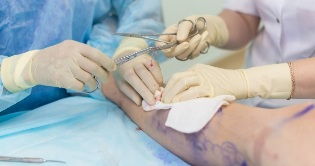
- suture care for 7-14 days in a hospital;
- the wearing of compression stockings or elastic bandages for 30 days is practiced 24 hours a day;
- after 30 days, for an additional 3 months, wear specialized underwear during the day
- water procedures with washing of the feet (where the operation was performed) are possible only after removing the stitches;
- during the recovery period, saunas, hot tubs and baths are prohibited;
- Pain relievers after surgery are prescribed by a doctor. Self-selection is prohibited;
- additional medicines are taken to prevent blood clots;
- take medicines to strengthen the walls of the blood vessels (vitamins E and C);
- it is forbidden to stay in a standing / sitting position for a long time, wearing high heels and tight underwear;
- During the supine rest period, the legs should be above the level of the body. Promotes the flow of excess blood and reduces swelling;
- in a timely manner and gradually introduce physical activity to normalize blood flow (discussed with your doctor)
- massages and physiotherapy are carried out with the permission of the treating specialist;
- refusal of alcoholic beverages and nicotine. Alcohol causes vasodilation, and tobacco, on the contrary, causes their narrowing. These effects reduce the effectiveness of the operation;
- if you are overweight, a low calorie diet is prescribed.
If the rules are respected, a complete restoration of the member's functioning is possible in 6 months.
Endovenous coagulation using a laser
An operation to remove veins from the legs with varicose veins using a laser is performed when direct vessels with a diameter of at least 0. 02 cm are reached and with a small number of capillaries. The procedure consists of the action of light waves on the damaged vessels with their subsequent soldering and destruction.
Equipment

Laser vein coagulation can be performed with one of 3 types of optical fibers:
| Type of optical fiber | Action sheet |
| Fine (classic) | This light guide produces beam radiation from the tip, ie the vessel is sealed in front of it. The downside is the formation of bruises and a painful feeling of tightness in the veins. Maximum diameter of the vein 0. 1 cm. |
| Radial (with painless radial light guide of the elves) | The light waves from the fiber form a circle that wraps around a diameter vein. This makes it possible to treat veins of any size. And also the risk of hematoma formation and the development of puffiness are minimized. |
| Of 3 types of radial fibers | Lasers with two light rings are used to remove varicose veins. The first prepares the vein for the procedure (removing excess fluid), the second circle welds the walls. For treatment, light guides are produced for thin and short veins and for large vessels. |
The choice of equipment is made not only by the patient, but also by the treating specialist for the condition of the vessels.
Which veins can be removed with the EVLK method
Before choosing EVLK, a phlebologist (a specialist who examines veins and removes varicose veins) determines the characteristics of damaged vessels. They must be straight and at least 2 mm in diameter.
Accordingly, laser therapy can be applied to the following groups of vessels:
- small and large saphenous veins;
- accessory saphenous veins, located at least 5 mm from the surface of the epidermis;
- vessels connecting the deep veins to the superficial veins.
For other veins, treatment is only possible by phlebectomy.
Efficiency
The elimination of veins by the EVLK method is possible with 3 types of optical fibers. Depending on the type of equipment, the effectiveness of the treatment changes. When performing an operation using an end light guide, the effectiveness of therapy is 94-96%. Operation with radial light guides allows you to achieve 100% results by removing varicose veins on the legs.
Preparation and implementation steps
When choosing to remove varicose veins using EVLK, the patient should undergo the following training:
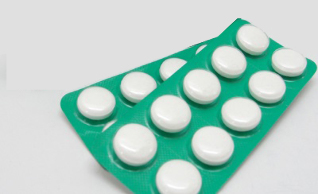
- Cancellation of hormonal drugs (if taken). Since they can cause the development of thrombosis;
- the day before the operation, it is necessary to take anticoagulants;
- screening for damaged veins to determine the extent of their damage;
- do tests to rule out the presence of hidden infection or inflammatory processes in the body. Blood coagulation is also determined;
- the site of the procedure is thoroughly washed and shaved (without the use of cosmetics, only antibacterial soap is allowed).
Before the start of the operation, the boundaries of the damaged vessels, the laser / fiber insertion site and the site of the branching capillaries are marked. These marks are used to weld the beginning and the end of the vein, as well as the outlets of the capillaries. The process is carried out under the control of an ultrasonic machine.
EVLK is produced in stages:
- Insertion of the catheter through a small puncture (the catheter insertion site is anesthetized under local anesthesia) in the marked area. The light guide will move along it.
- Insertion of the light guide into the catheter and advance it to the damaged area. It is performed under ultrasonic control on a monitor.
- An injection of anesthetic to numb the vein and surrounding tissue.
- Advancement of the "active" light guide through the damaged vein, followed by a delay where the capillaries branch out (to seal exits and prevent bleeding).
- Laser removal with antiseptic treatment of the puncture site and application of an elastic bandage (or using compression stockings).
Once the procedure is completed, the patient can be discharged from the hospital immediately.
Characteristics of rehabilitation
To restore the functioning of the injured limb and prevent the development of complications, you need to familiarize yourself with the nuances of rehabilitation after EVLK.
These are:
- after the end of the procedure, it is recommended to walk the operated leg in the medical establishment for an hour;
- for 2-3 days, ultrasound control of the treated vein is performed;
- for 5 days it is mandatory to wear specialized underwear 24 hours a day (the type of stockings is discussed with the treating specialist before the operation). In addition, within 45-60 days, the clothes should be used during the day;
- perform a daily kneading of the legs by walking every day from 60 minutes;
- Avoid overloading the legs (prolonged sitting or standing) and visiting saunas or taking hot baths.
If the removal of varicose veins is still necessary, the procedures can be performed no earlier than 7 days.
Advantages of each of the techniques
Surgery to remove the veins of the legs for varicose veins, depending on the type of intervention, has the following advantages:
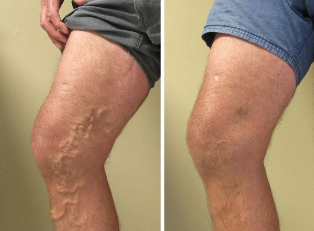
| Phlebectomy | EVLK |
| The incisions for the operation are approximately 5mm, so there are hardly any scars left | No pain during the procedure (under local anesthesia). General anesthesia is not required |
| Painless, as the operation is performed under local anesthesia. For miniflebectomy, local anesthesia is used. | EVLK is performed under ultrasonic control. The result is high precision and efficiency. |
| Low cost | Bruising and pain at the surgery site are rare or mild. |
| Fast restoration of the complexion (no stars and purple-cyanotic tint of the epidermis) | The operation requires 1 puncture, so no stitches or scars are needed |
| Short payback period of around 30 days | Payback period up to 5 days |
| Effective for all forms of varicose veins | After surgery, the patient can leave the clinic within an hour. |
| Return to normal life is possible within 24 hours. | |
| EVLK can be performed when the integrity of the epidermis is compromised by ulcers. | |
| The duration of the surgery does not exceed 40 minutes. | |
| EVLK can be performed on both legs in one day. On one leg, a second operation is allowed after 7 days. |
The risk of infection during the procedure is minimal, as the incision / puncture is small.
Complications after surgical and laser venous surgery
There is a risk of complications after removal of the vein by surgery or laser. Negative reactions may occur due to the weak qualifications of a specialist or due to a violation of the rules during the rehabilitation period. Possible complications of phlebectomy and endovenous coagulation.
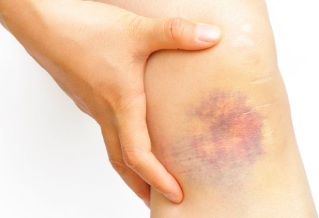
| Methods of removing veins | Minor procedural complications | Major complications |
| Phlebectomy |
|
|
| Endovenous laser coagulation |
|
|
During both operations an allergic reaction to the anesthetic drugs may develop.
Measures to minimize complications
Surgery to remove the veins of the legs with varicose veins is sometimes accompanied by the development of complications, to prevent their occurrence it is necessary:
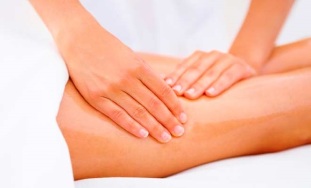
- screening for allergic reactions to the drugs used;
- exclusion of infectious diseases and inflammatory processes in the body before the operation;
- selection of proven clinics with highly qualified specialists and modern equipment;
- rule compliance during the payback period. In particular, wear compression underwear;
- observe dietetic foods during the recovery period (discussed by a specialist after the procedure). The amount of pure water increases in the diet, food is taken in small portions, the diet is enriched with vitamins and minerals;
- resting feet during working hours;
- undergo a post-surgery examination to monitor the dynamics of limb recovery;
- to perform massage and physiotherapy to quickly restore blood circulation.
If you notice any unacceptable deviations for this operation, you should immediately contact the clinic.
Forecast comparison
With both methods of removing veins from the legs, the probability of complete recovery is more than 95%, but subject to the elimination of contraindications, observance of the rules during the rehabilitation period and during thechoice of a proven clinic. With surgical treatment, blood circulation and the external condition of the legs are restored after 3 months, and with laser therapy, recovery is noted after 30 days.
In advanced forms, the removal of blood vessels is performed by surgery. The method of treatment is determined not only by the desire of the patient, but also by the presence of indications and contraindications for the procedure. The effectiveness of therapy depends on the qualifications of the doctor and the implementation of the rules of foot care after surgery.























